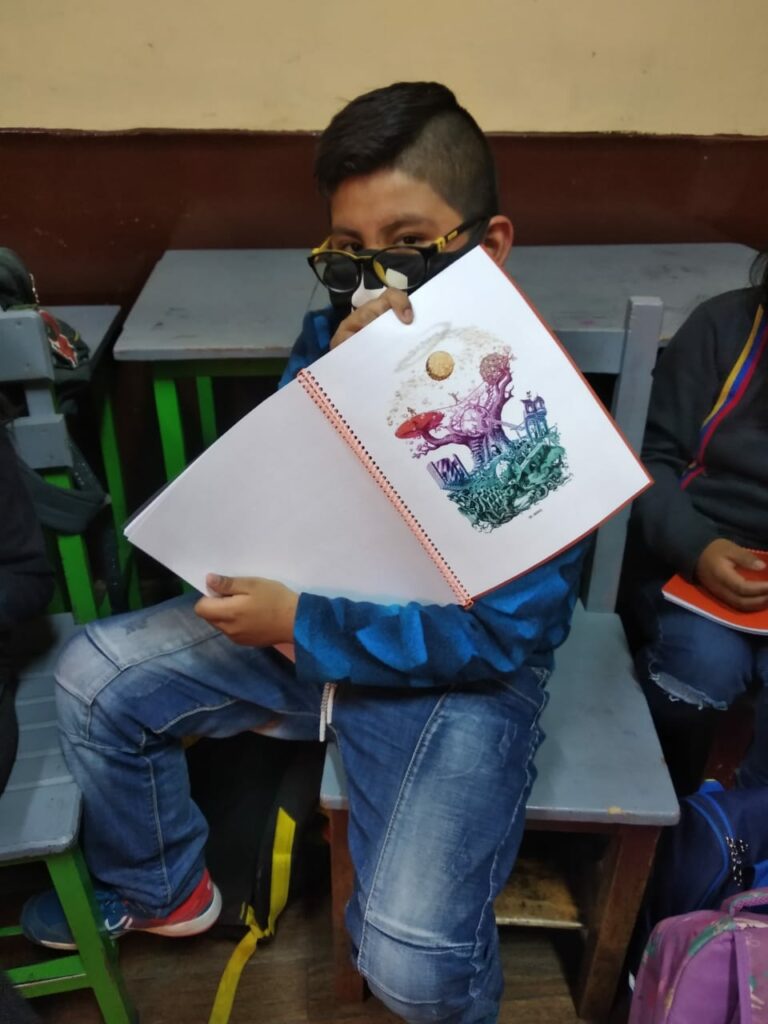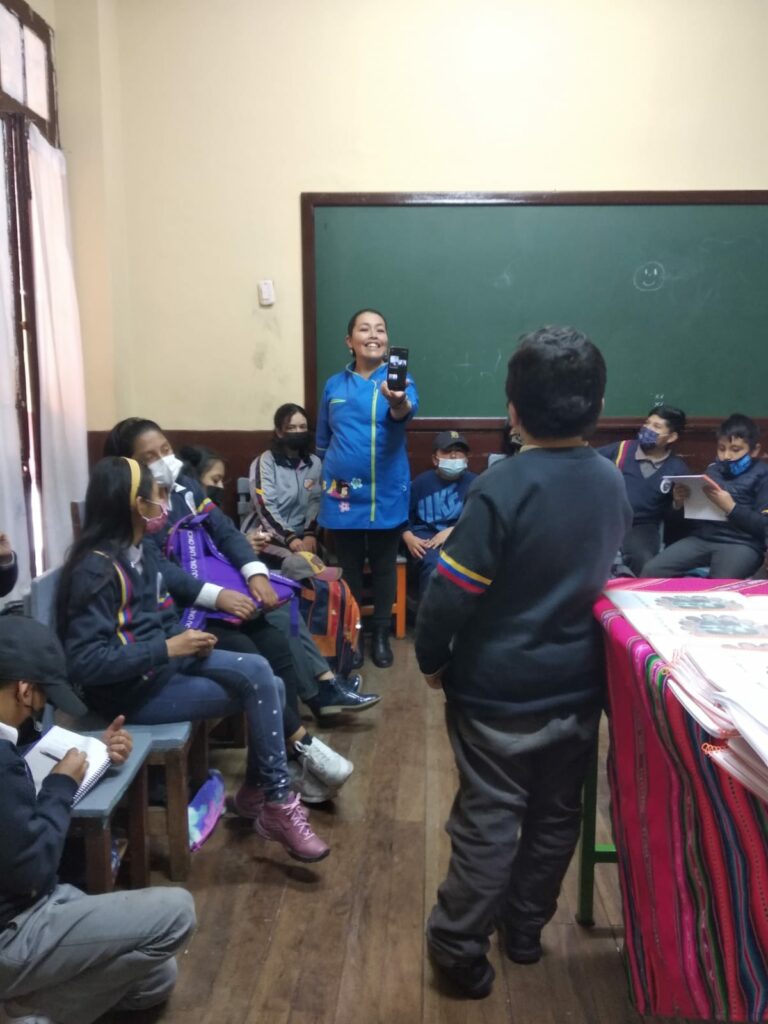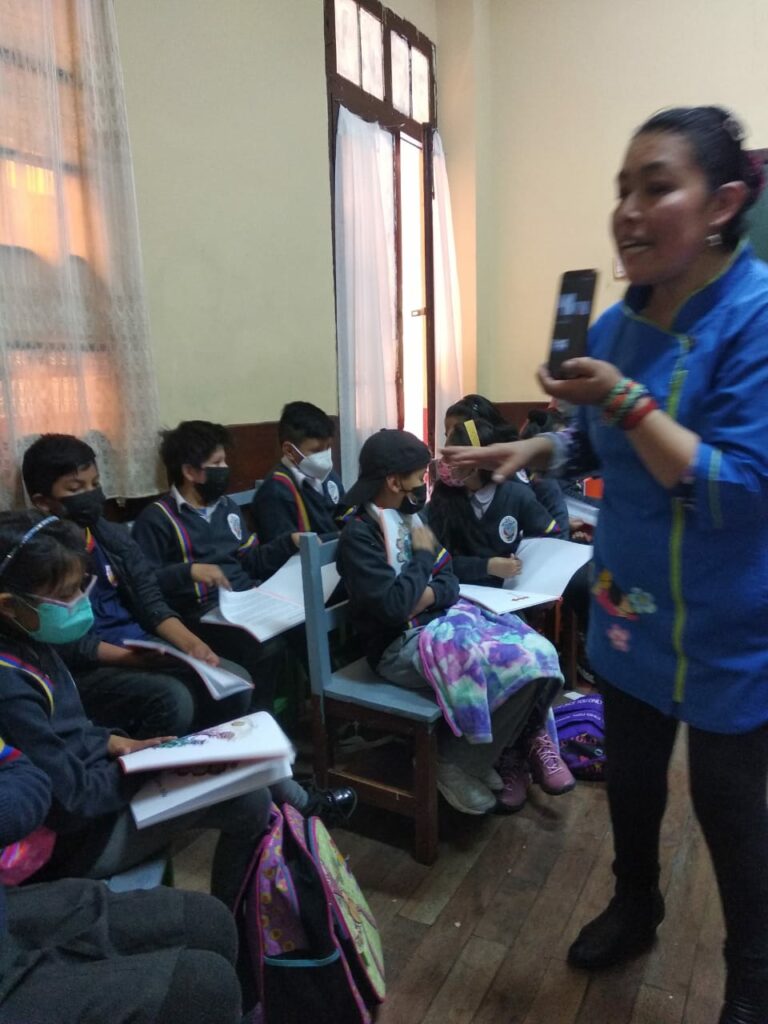We talked to Saúl Asenjo, a long-time Siloist who today lives in the state of Pennsylvania, near New York. From there he has managed and helped to produce two interesting editorial contributions for the dissemination of Siloism among children and the Mapuche nation of Chile and Argentina.
The first, entitled “El librito del Maestro Silo. A children’s version of The Inner Look”, was produced in collaboration with Bolivians Omar Tapia (design and layout) and Sandra Moreno (children’s teacher in the city of La Paz). For the second, Saúl enlisted the help of Benito Cumilao, a native Mapudungun speaker from the Argentinian province of Chubut, Argentina.
Q: Good afternoon, Saúl. Tell us about these two books and the process of making them a reality.
The two books have different perspectives. With regard to the children’s book, I have the idea of integrating the contents of Siloism or Universalist Humanism into the educational system, hopefully permanently and at all levels. E.g. in a commune, in a region or, more ambitiously, on a national level. In some countries there is already some experience: in the Argentinean city of Moreno and other places I believe that at some point our themes were installed.
We humanists have a lot of experience in holding seminars, workshops and conferences on our themes, but in general there have been no materials that have been permanent and useful to people, from a very young age. That’s the idea of the booklet: to keep it circulating, to have it permanently installed in as many places as possible, and to make changes to improve it with complete freedom.
Q: Do you have the idea of extending the themes of Universalist Humanism to other books?
From Argentina I have been asked to do the same with Silo’s book “Humanise the Earth”. To answer the question: yes, I would like to expand it. At first, I thought it would be more difficult, but when one connects with one’s “inner child”, things go more smoothly. It would be interesting and very useful if a Siloist publishing house would print it as a material for wider distribution. So far it has been printed in a rather handmade way, only a few copies with funding from some collaborators. Even so, the Little Book has been printed in many places, especially in Bolivia, Chile and, strangely enough, in Argentina, where it has been presented at book fairs, universities and has been left in some bookshops. When one launches an inspired action, one does not imagine the scope that this action can reach. So, this is an appeal to the Siloist publishing world to consider publishing it.
Q: Of course, it’s very important to reach children in a language they can relate to.
Yes, it is. The experience we had in Bolivia was amazing. The children are already in fifth grade, and since first grade they have had contact with our themes, and now these last two years with the book itself. They already know how to do many things: they know the principles of valid action, the Golden Rule, they make drawings with our themes, for example “hands are for caressing, not for hitting”. They also have a lot of empathy for animals and nature. They know very well how to make a request, they know how to relax, how to make a low breathing, and all that.
The idea is launched so that any siloist can follow it up with other materials, and I am very willing to collaborate if necessary. It would be good for people to adapt it however they want, to do it differently, for creativity and diversity to be manifested.





Images from the experience of disseminating the adaptation of Silo’s “The Inner Look” in a primary school in La Paz, Bolivia.
Q: What can you say about the book “Silo’s Message” translated into Mapudungun?
It is a very old aspiration that has been around for years. I had proposed the idea to several people, and now it has been realised. It is a huge work: it took about two years for the final result to come out. It is not an easy book to translate, because of the subject matter. I needed the themes to fit with the translator so that the translation would come out of that fit, not a literal translation. So I couldn’t rush it either. The translator is Benito Cumilao, a native speaker and son of a lonko from a community with a long social trajectory in the Chubut area. He is a guy who lives in the countryside, in the mountains. I contacted him through Raúl Noro, husband of Milagro Sala, and an old siloist from the sixties and so on. He gave me the name of a Mapuche woman who is very well connected, called Sandra Silva, and she told me “I’m going to find the right person for you”. And she found me this wise, cultured and thoughtful person.
There are several variants of Mapudungun, I think there are four, so there are many opinions when you take a paragraph out of the book. So, as it appears on the back cover of the book, if there is someone who wants to do another version, they are welcome to do it! This version is a dialect of Mapudungun and has no modification. It would be great if there were new versions. Benito Cumilao says that it will be a great contribution to the Mapuche nation people, which will surely be well received. I hope with all my heart that it will be.
Q: Thank you very much for the comments and, above all, for these interesting and innovative initiatives to disseminate Universalist Humanism to the children and the Mapuche nation.










